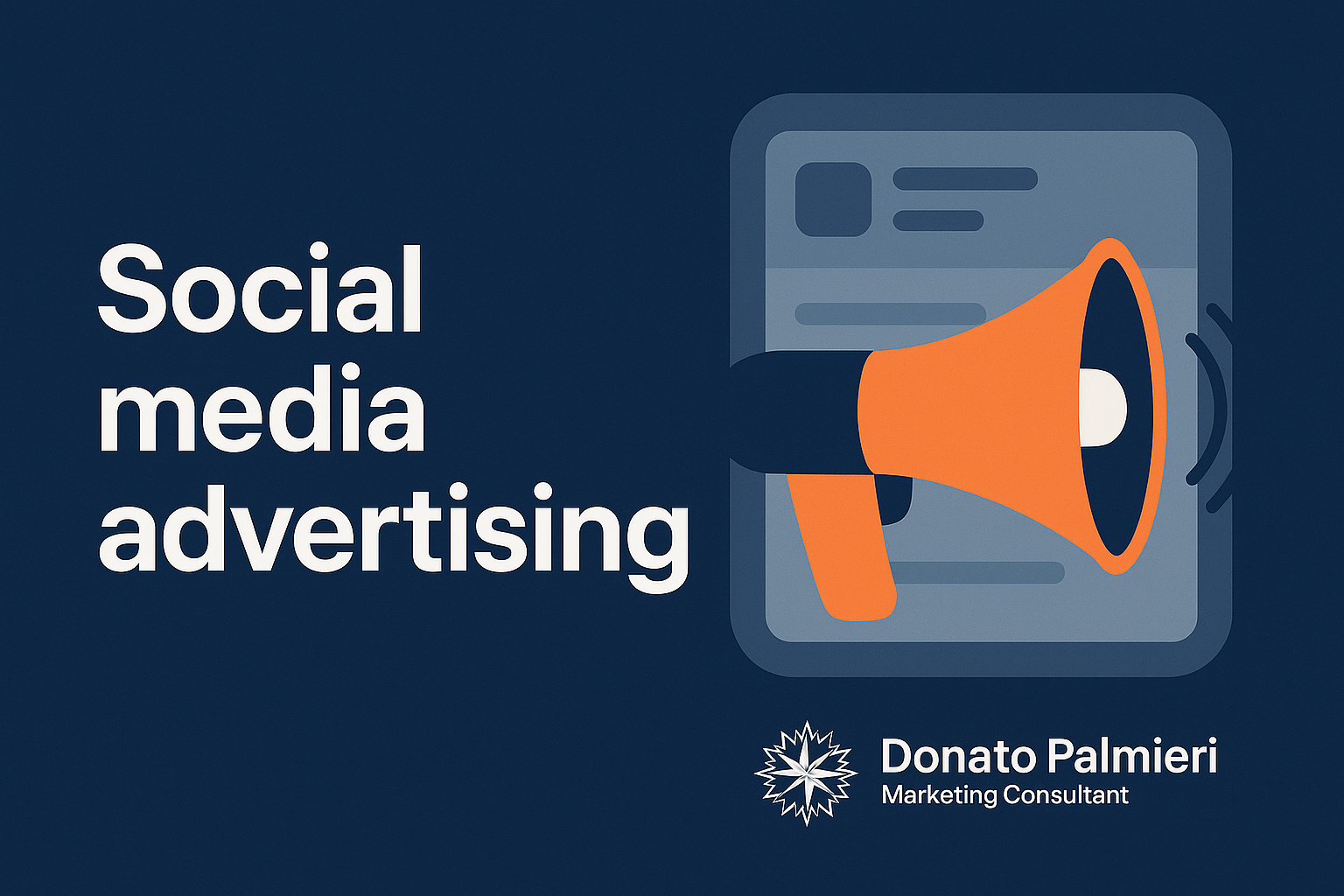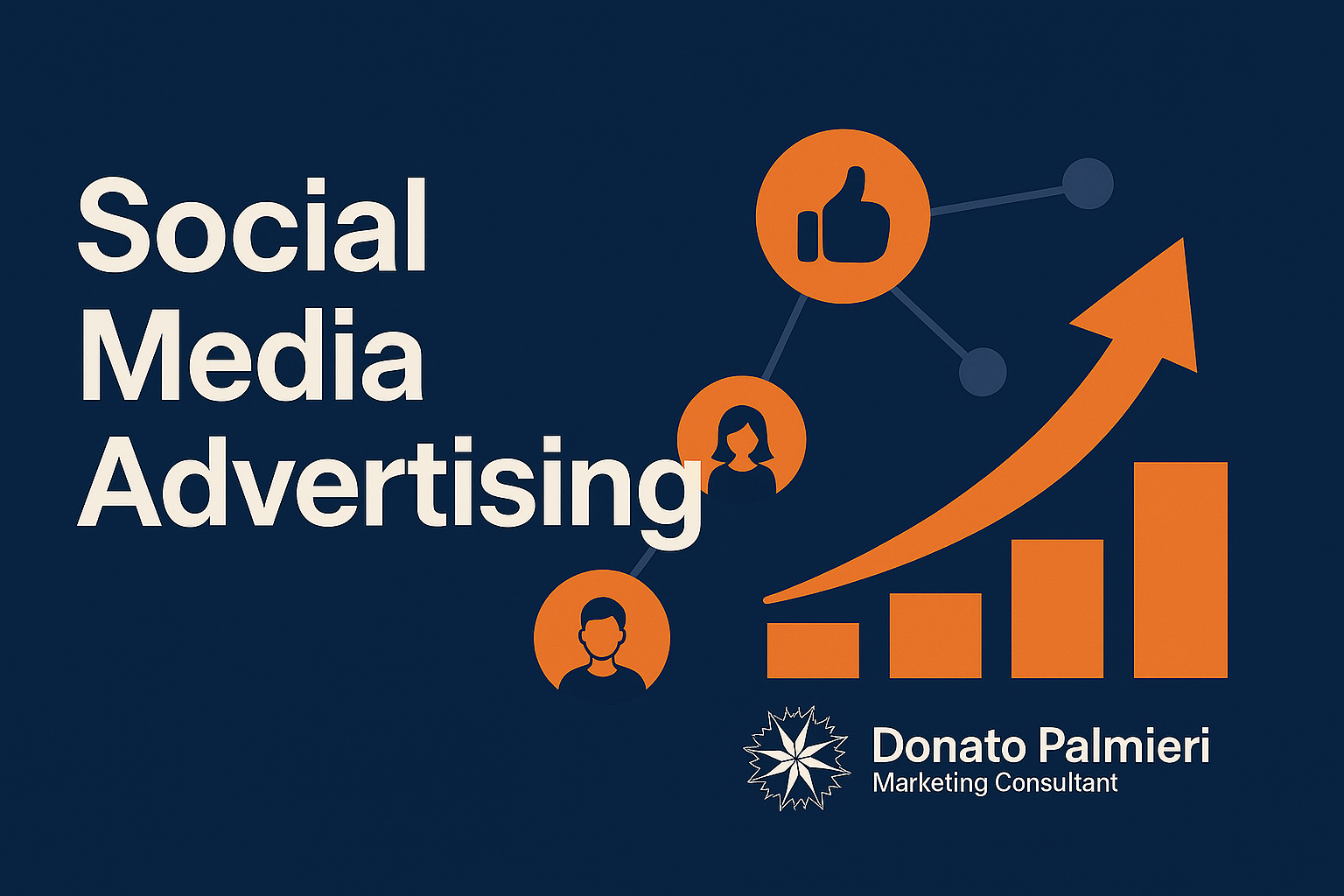The Power of Social Media Advertising
There was a time when businesses could rely on a great product and word-of-mouth to gain traction. But let’s face it: in today’s landscape, even the best ideas get drowned out without the right strategy behind them. That’s where social media advertising steps in. From my experience as a consultant in Digital Marketing, I’ve seen countless brands underestimate the potential of platforms like Facebook, Instagram, LinkedIn, and TikTok. These aren’t just apps—they’re powerful ecosystems where attention is currency, and the battle for visibility never stops.
My name is Donato Palmieri, and I help businesses design and execute strategies that actually work in today’s crowded digital space. Over the years, I’ve learned that simply having an online presence isn’t enough—you need the right mix of creativity, targeting, and consistency to make social ads perform. In this article, I’ll walk you through how I approach social media advertising and why it can become one of the strongest growth levers for any business.

Index:
Why it works
The magic of social media advertising isn’t just in its reach—it’s in its precision. Imagine walking into a room filled only with people who need what you offer. That’s what targeted advertising does: it allows you to refine your audience based on demographics, interests, purchase behaviors, job titles, or even life events. Unlike traditional ads that cast a wide net and hope for results, social media lets you speak directly to the right people at the right time.
Beyond precision, there’s the issue of cost. Compared to traditional methods like TV, radio, or print, social ads provide full control over your budget and give you detailed feedback in real time. Whether you’re investing a modest budget or managing campaigns at scale, every euro can be monitored, optimized, and reinvested into what works best. This accountability is one of the main reasons businesses of all sizes are shifting their ad spend online.
And then there’s branding. Regularly appearing in your audience’s feed helps create familiarity, and familiarity is the foundation of trust. People buy from brands they recognize, and running consistent, well-crafted campaigns accelerates this recognition. Add to that the interactive nature of these platforms—likes, comments, shares, and direct messages—and you have not just visibility but true engagement. Engagement builds loyalty, and loyalty is the most valuable currency in digital marketing.
Key Benefits
| Feature | Benefit |
|---|---|
| Targeted Ads | Speak to a specific audience |
| Cost Control | Full flexibility with spend |
| Brand Visibility | Reinforces recognition and trust |
| Engagement | Encourages interaction and loyalty |
| Real-Time Data | Make informed decisions quickly |
Choosing platforms
Not all platforms are created equal, and one of the most common mistakes I see is brands trying to be everywhere at once. Each network has its own strengths, and spreading yourself too thin usually results in diluted impact. Instead, I always advise clients to focus on the channels where their target audience is most active and where their brand voice fits naturally.
If you’re targeting professionals or B2B decision-makers, LinkedIn ads are essential. For lifestyle brands, Instagram and TikTok provide the perfect environment to showcase creativity and brand personality. Facebook remains a versatile platform, with robust tools for both targeting and conversion campaigns. And then there’s Pinterest, which works incredibly well for niche categories like home décor, fashion, DIY, and wellness.

Over time, I’ve seen clients thrive when they align their channel selection with audience behavior. For example, a B2B SaaS company I worked with struggled on Instagram but generated a steady pipeline of leads through LinkedIn and Twitter. On the other hand, an independent jewelry brand achieved impressive growth through shoppable posts on Instagram, with Pinterest acting as a strong discovery tool. The point is: platform choice should always be intentional, never random.
Platform priorities
| Platform | Best Use Case |
|---|---|
| Broad targeting, conversions | |
| Visual storytelling, engagement | |
| B2B lead generation | |
| TikTok | Viral reach, brand personality |
| Lifestyle products, discovery |
Crafting the message
Even with the right platform, ads fail without the right message. One of the first steps I take with clients is to map the mindset of their audience. What are their goals? What frustrations do they face? What aspirations keep them motivated? Ads that simply list product features fall flat, but ads that empathize with these motivations spark interest.
From there, the copywriting process becomes about clarity and persuasion. Headlines need to grab attention instantly, while the body text should focus on benefits rather than just features. A strong SEO approach also helps ensure the language resonates with both users and search engines. Calls-to-action must be direct, specific, and impossible to ignore.
Visuals, however, are equally critical. A scroll-stopping image or a short, engaging video can determine whether someone pays attention or swipes past. That’s why I constantly run A/B tests with different formats, colors, headlines, and creative angles until we find what truly resonates. And, of course, all of this effort has to lead somewhere meaningful. Landing pages must be optimized for speed, usability, and conversions. If the page doesn’t deliver on the ad’s promise, even the most brilliant campaign will fail.
Creative Elements
| Component | What Matters Most |
|---|---|
| Headline | Grabs attention instantly |
| CTA | Drives action clearly |
| Visuals | Must stop the scroll |
| Copy | Speaks to user pain/desire |
| Landing Page | Seamless experience to conversion |
Strategy-in-motion
Launching ads is only the beginning. The true success of a campaign lies in ongoing optimization. I never let campaigns run on autopilot. Instead, I monitor metrics daily, make adjustments weekly, and experiment constantly. Numbers tell a story, and if you’re paying attention, you can pivot before issues become costly mistakes.
One of the frameworks I use is the full-funnel approach. At the top, we run awareness campaigns to reach cold audiences who’ve never heard of the brand. In the middle, we retarget warm audiences who have engaged with our content but haven’t converted yet. Finally, at the bottom, we run conversion-focused ads targeting people most likely to buy. This layered approach reflects how people actually make decisions in real life and avoids the trap of pushing too hard too soon.
Advanced tools make all this even more powerful. Features like lookalike audiences, split testing, and performance tracking in tools like Meta Ads Manager or LinkedIn Campaign Manager give advertisers a huge advantage. When campaigns are structured well, they become a predictable growth engine rather than a gamble.
Optimization Tools
| Tactic | Benefit |
|---|---|
| Retargeting | Recapture warm leads |
| Lookalike Audiences | Expand reach effectively |
| Split Testing | Refine what works |
| Performance Metrics | Optimize in real-time |
| Funnel Strategy | Guide users through buyer journey |

Social media advertising is not a magic bullet, but when it’s done strategically, it becomes one of the most powerful levers a business can pull for growth. From precision targeting to creative storytelling and full-funnel strategies, the opportunities are vast—but only if approached with consistency and focus.
What I’ve shared here is the framework I use with my clients: select the right platforms, craft messages that resonate, and commit to constant optimization. And remember, ads do not exist in isolation. They work best when paired with strong content strategies and an investment in Audience Building. Without quality content, ads lack substance. Without ads, content often struggles to reach its full potential.
If you’re ready to turn attention into action and want a partner who can guide you step by step, I’d be glad to help. This is what I do every day—bridging the gap between visibility and results.

